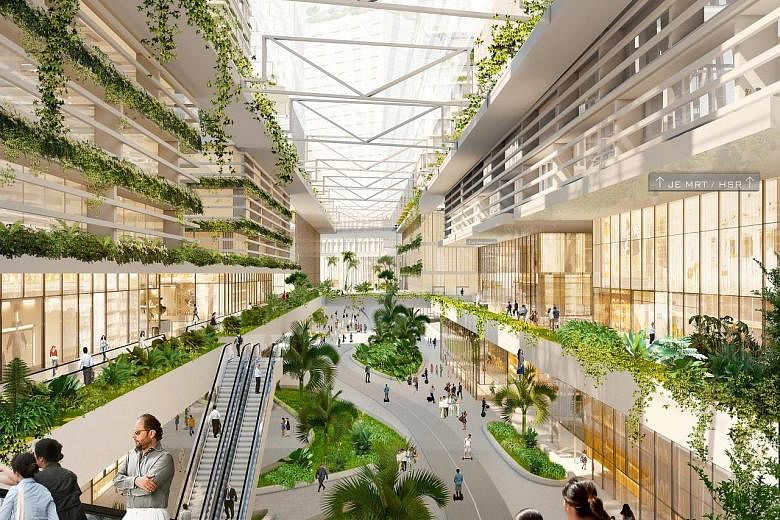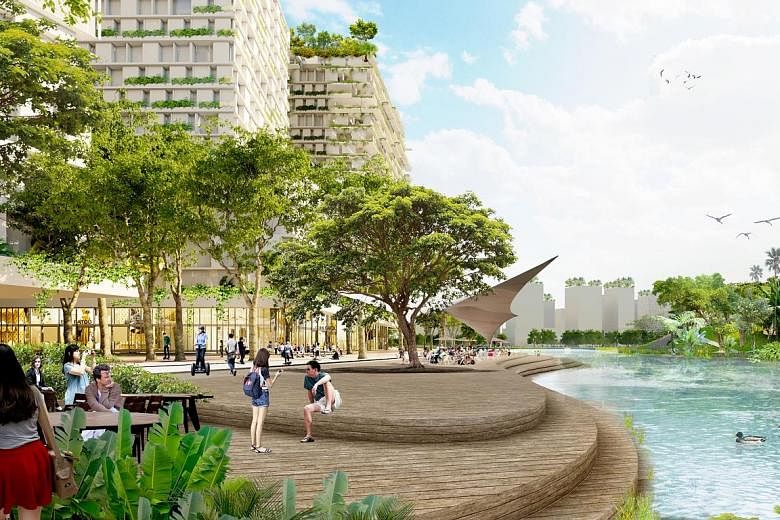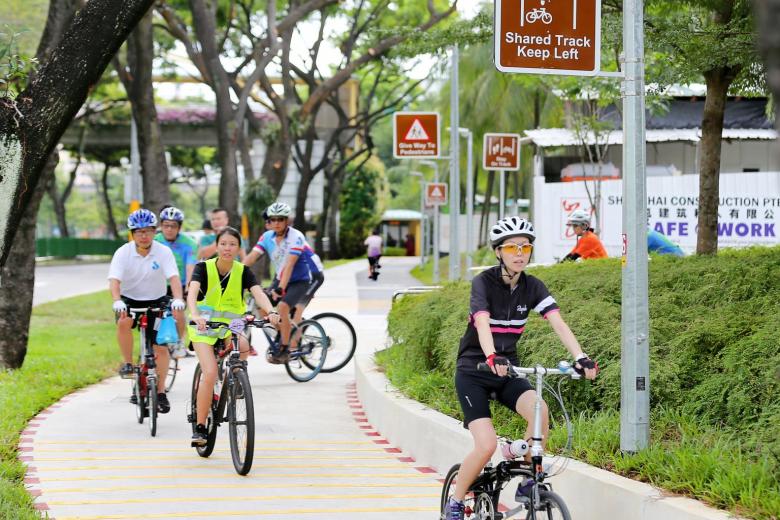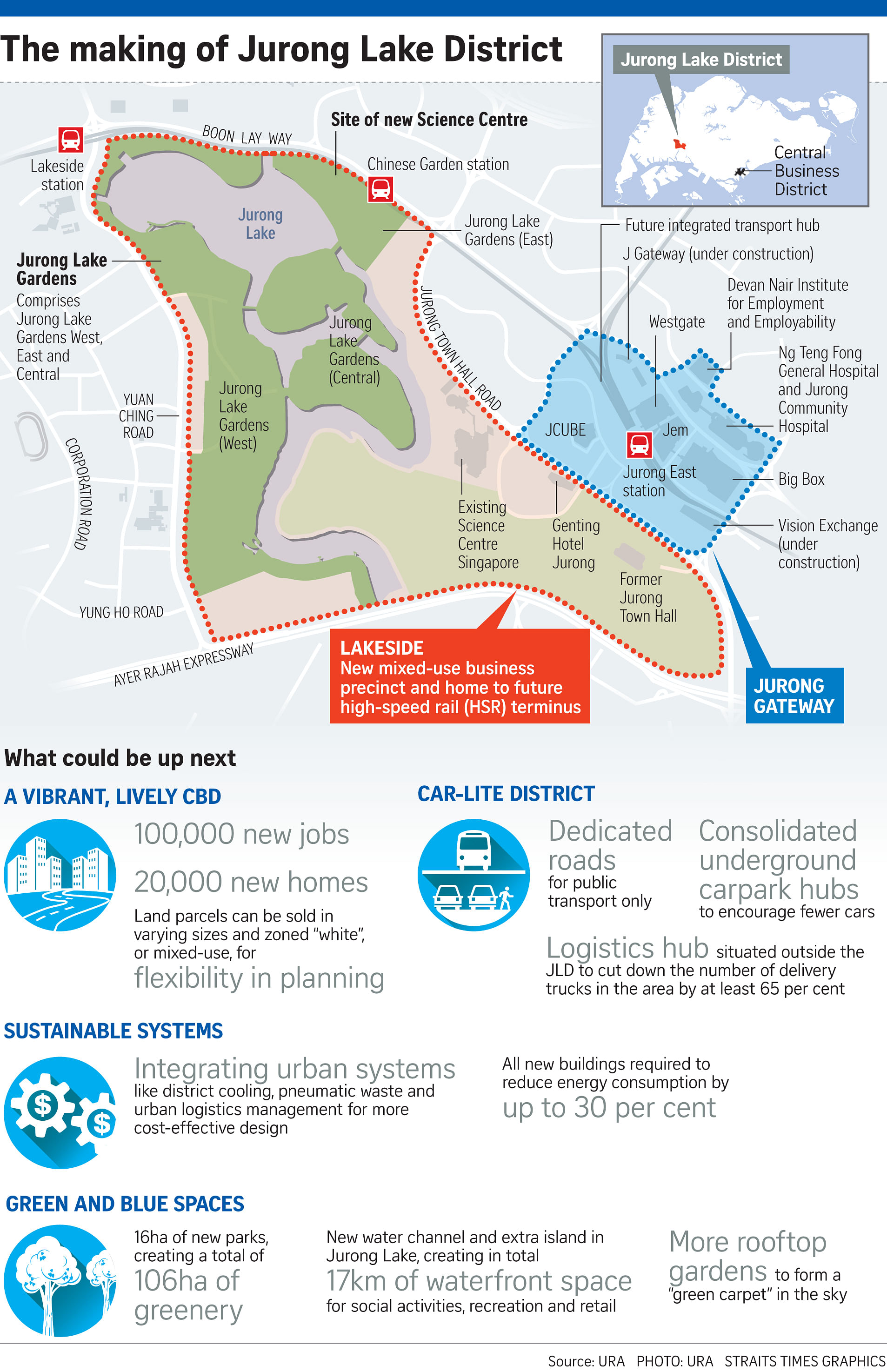The upcoming Jurong Lake District (JLD) has set the ambitious goal of getting commuters to use public transport for at least eight in 10 trips within the 360ha district.
Currently, public transport accounts for just 66 per cent of all trips across Singapore.
In 2008, the Government set a target to raise the public-transport mode share to 70 per cent by 2020.
Observers and residents say realising JLD's goal may be an uphill task but not an impossible one.
To nudge commuters in this direction, 45 ha - or about 12 per cent - of the district will be served by public transport-only corridors. This means no private vehicles will be allowed, with only buses plying the roads. There will also be 39km of cycling paths, and more space for pedestrians and personal mobility device users.
The Urban Redevelopment Authority (URA) is also looking at restricting parking space. Instead of individual carparks at each building, it will build four consolidated underground parks, to be within 400m of every development. It is not yet clear how many parking spaces each will have.
It is this particular move that National University of Singapore transport researcher Lee Der Horng says will give drivers the much-needed push to turn to buses and trains instead.
He pointed to Hong Kong, where public transport utilisation is close to 90 per cent. Besides a convenient and reliable public transport network, a lack of parking is a major factor, he said. "At the moment, as long as you're willing to pay, you'll always find a place to park in Singapore," he said. "But with the JLD, you are better off leaving your beloved Mercedes at home."
The move, if successful, may have a knock-on effect on other parts of Singapore when they go through redevelopment, he added.
Another idea URA is exploring is an offsite consolidation centre. A concept borrowed from Japan, the centre will be a logistics hub located outside the district, where goods can be consolidated and dispatched with smaller delivery trucks. This would cut the number of delivery trucks by at least 65 per cent during peak hours, URA said.
Nanyang Technological University senior research fellow Gopinath Menon said this measure can have a significant impact, given that "commercial traffic in Jurong can be quite high compared to other areas".
In addition, the district, already served by three MRT stations across two lines, will be further connected by the future Jurong Region Line and Cross Island Line. It will also be connected to the High Speed Rail terminus that links Singapore to Kuala Lumpur.
Jurong resident and interior designer Angeline Seow, 34, said she may be prompted to sell her car should all these developments come to fruition. "Jurong is so far from the main parts of Singapore," she said. "But with the changes, it'll be easier to get around."





